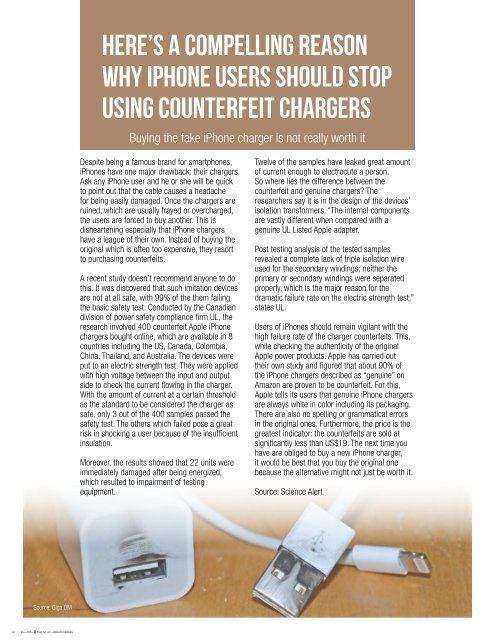GineersNow Engineering Magazine January 2017 Issue No 011
GineersNow Engineering Magazine January 2017 Issue No 011 A year in the life of Mark Zuckerberg: How 2016 became an exciting year for the Facebook Billionaire. Exclusive: 2017 trends, Social Media, Software, Social Good, Social Impact, Social Innovation, Social Change, Impact Investing, Philanthropy, CSR, Social Entrepreneurs, B-Corp, Benefit Corporation, Social Investing. Special Feature Stories: HVACR, Oil & Gas, Construction, Heavy Equipment, Machinery, Tools, Civil Engineering, Mechanical, Electrical, Plumbing, MEP, Water, Wastewater, Renewables, Sustainability, Energy, Petroleum, Heavy Equipment, Rental Equipment, Contractors, EPC, Food, HSE, Lighting, Telecom, Trucks. Country Focus: United States, Canada, United Arab Emirates, Saudi Arabia, Qatar, Bahrain, Kuwait, Oman, United Kingdom, Singapore, Hong Kong, Philippines, Malaysia, Indonesia, India, Australia More engineering stories at https://www.gineersnow.com/topics/magazines
GineersNow Engineering Magazine January 2017 Issue No 011
A year in the life of Mark Zuckerberg: How 2016 became an exciting year for the Facebook Billionaire.
Exclusive: 2017 trends, Social Media, Software, Social Good, Social Impact, Social Innovation, Social Change, Impact Investing, Philanthropy, CSR, Social Entrepreneurs, B-Corp, Benefit Corporation, Social Investing.
Special Feature Stories: HVACR, Oil & Gas, Construction, Heavy Equipment, Machinery, Tools, Civil Engineering, Mechanical, Electrical, Plumbing, MEP, Water, Wastewater, Renewables, Sustainability, Energy, Petroleum, Heavy Equipment, Rental Equipment, Contractors, EPC, Food, HSE, Lighting, Telecom, Trucks.
Country Focus: United States, Canada, United Arab Emirates, Saudi Arabia, Qatar, Bahrain, Kuwait, Oman, United Kingdom, Singapore, Hong Kong, Philippines, Malaysia, Indonesia, India, Australia
More engineering stories at https://www.gineersnow.com/topics/magazines
Create successful ePaper yourself
Turn your PDF publications into a flip-book with our unique Google optimized e-Paper software.
42 ISSUE NO. 001 • MARK ZUCKERBERG<br />
Here’s a Compelling Reason<br />
Why iPhone Users Should Stop<br />
Using Counterfeit Chargers<br />
Buying the fake iPhone charger is not really worth it<br />
Despite being a famous brand for smartphones,<br />
iPhones have one major drawback: their chargers.<br />
Ask any iPhone user and he or she will be quick<br />
to point out that the cable causes a headache<br />
for being easily damaged. Once the chargers are<br />
ruined, which are usually frayed or overcharged,<br />
the users are forced to buy another. This is<br />
disheartening especially that iPhone chargers<br />
have a league of their own. Instead of buying the<br />
original which is often too expensive, they resort<br />
to purchasing counterfeits.<br />
A recent study doesn’t recommend anyone to do<br />
this. It was discovered that such imitation devices<br />
are not at all safe, with 99% of the them failing<br />
the basic safety test. Conducted by the Canadian<br />
division of power safety compliance firm UL, the<br />
research involved 400 counterfeit Apple iPhone<br />
chargers bought online, which are available in 8<br />
countries including the US, Canada, Colombia,<br />
China, Thailand, and Australia. The devices were<br />
put to an electric strength test. They were applied<br />
with high voltage between the input and output<br />
side to check the current flowing in the charger.<br />
With the amount of current at a certain threshold<br />
as the standard to be considered the charger as<br />
safe, only 3 out of the 400 samples passed the<br />
safety test. The others which failed pose a great<br />
risk in shocking a user because of the insufficient<br />
insulation.<br />
Moreover, the results showed that 22 units were<br />
immediately damaged after being energized,<br />
which resulted to impairment of testing<br />
equipment.<br />
Twelve of the samples have leaked great amount<br />
of current enough to electrocute a person.<br />
So where lies the difference between the<br />
counterfeit and genuine chargers? The<br />
researchers say it is in the design of the devices’<br />
isolation transformers. “The internal components<br />
are vastly different when compared with a<br />
genuine UL Listed Apple adapter.<br />
Post testing analysis of the tested samples<br />
revealed a complete lack of triple isolation wire<br />
used for the secondary windings; neither the<br />
primary or secondary windings were separated<br />
properly, which is the major reason for the<br />
dramatic failure rate on the electric strength test,”<br />
states UL.<br />
Users of iPhones should remain vigilant with the<br />
high failure rate of the charger counterfeits. This,<br />
while checking the authenticity of the original<br />
Apple power products. Apple has carried out<br />
their own study and figured that about 90% of<br />
the iPhone chargers described as “genuine” on<br />
Amazon are proven to be counterfeit. For this,<br />
Apple tells its users that genuine iPhone chargers<br />
are always white in color including its packaging.<br />
There are also no spelling or grammatical errors<br />
in the original ones. Furthermore, the price is the<br />
greatest indicator: the counterfeits are sold at<br />
significantly less than US$19. The next time you<br />
have are obliged to buy a new iPhone charger,<br />
it would be best that you buy the original one<br />
because the alternative might not just be worth it.<br />
Source: Science Alert<br />
Source: Giga OM


















